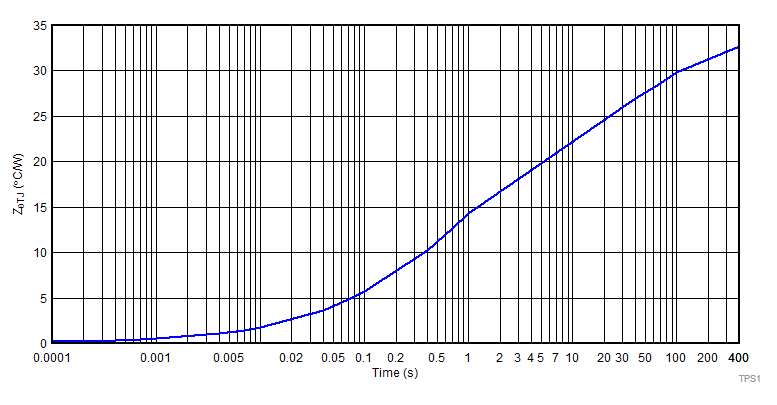JAJSGO4D November 2018 – December 2019 TPS1HA08-Q1
PRODUCTION DATA.
- 1 特長
- 2 アプリケーション
- 3 概要
- 4 改訂履歴
- 5 Device Comparison Table
- 6 Pin Configuration and Functions
- 7 Specifications
- 8 Parameter Measurement Information
-
9 Detailed Description
- 9.1 Overview
- 9.2 Functional Block Diagram
- 9.3
Feature Description
- 9.3.1 Protection Mechanisms
- 9.3.2 Diagnostic Mechanisms
- 9.3.3 Enable Watchdog
- 9.4 Device Functional Modes
- 10Application and Implementation
- 11Power Supply Recommendations
- 12Layout
- 13デバイスおよびドキュメントのサポート
- 14メカニカル、パッケージ、および注文情報
10.1.7 Thermal Information
When outputting current, the will heat up due to the power dissipation. Figure 55 shows the transient thermal impedance curve that can be used to determine the device temperature during 1 W pulse of a given length.
 Figure 55. Transient Thermal Impedance
Figure 55. Transient Thermal Impedance